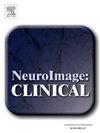同时MRI和激光多普勒血流仪:评估神经重症监护患者的大脑宏观和微循环
IF 3.6
2区 医学
Q2 NEUROIMAGING
引用次数: 0
摘要
目的在神经重症监护病房(NICU)对蛛网膜下腔出血(SAH)患者进行监测,以避免额外的脑损伤,但监测脑血流(CBF)的方法有限。目的是探讨在NICU患者中同时使用动脉自旋标记(ASL)和2d血流MRI以及基于探针的激光多普勒血流仪(LDF)的可行性。方法选取4例SAH患者,其中3例在常规手术中接受了光学探针。在每位患者数天内进行3-4次MRI检查前,评估LDF与MRI同时检查的兼容性。通过ASL脑血流绝对图获得的灰质平均脑血流、2D-flow MRI计算的总脑流和局部平均LDF灌注对两种方法进行比较。此外,比较ASL的区域平均CBF和每个半球的动脉流速。结果12次MRI测量成功,其中8次同时进行LDF测量。通过仔细的例行程序和独特的位于NICU的MR扫描仪,患者的安全性和数据质量都没有受到损害,证明了并发测量的可行性。所有方法均表现出纵向动态变化,具有相同的增减趋势。3例患者ASL与2D-flow数据密切相关,动态变化在10%以内。这种新方法提供了对人类大脑局部、区域和全局宏观和微循环成分的纵向、同步估计。这一概念有可能为新生儿重症监护病房患者脑血流不同方面的相互作用提供见解,从而有助于预防继发性脑损伤。本文章由计算机程序翻译,如有差异,请以英文原文为准。
Simultaneous MRI and laser Doppler Flowmetry: Assessing cerebral Macro- and microcirculation in neurointensive care
Objective
Subarachnoid hemorrhage (SAH) patients are monitored in the neurointensive care unit (NICU) to avoid additional brain injuries, yet methods for monitoring cerebral blood flow (CBF) are limited. The aim was to investigate the feasibility of simultaneous MRI, using arterial spin labeling (ASL) and 2D-flow MRI, and probe-based laser Doppler flowmetry (LDF) in NICU patients.
Method
Four SAH patients, three of whom received optical probes during routine surgery, were included. Compatibility of simultaneous LDF and MRI was evaluated before performing MRI 3–4 times over several days per patient. The methods were compared using mean CBF in grey matter obtained from the absolute ASL CBF-maps, the total inflow calculated from 2D-flow MRI, and local average LDF perfusion. Additionally, regional mean CBF from ASL and each arterial flowrate was compared for each hemisphere.
Result
Twelve MRI measurements were successfully performed, eight of which included simultaneous LDF. With careful routines and the MR scanner uniquely located in the NICU, neither patient safety nor data quality was compromised, demonstrating the feasibility of concurrent measurements. All methods showed longitudinal dynamic changes, following the same increasing or decreasing trends. In three patients, ASL and 2D-flow data were closely related, with dynamic changes within 10 %.
Conclusion
This novel approach offers longitudinal, simultaneous estimates of macro- and microcirculatory components locally, regionally, and globally in the human brain. This concept has potential to provide insights into the interplay of different aspects of CBF in NICU patients and thereby aid in prevention of secondary brain injuries.
求助全文
通过发布文献求助,成功后即可免费获取论文全文。
去求助
来源期刊

Neuroimage-Clinical
NEUROIMAGING-
CiteScore
7.50
自引率
4.80%
发文量
368
审稿时长
52 days
期刊介绍:
NeuroImage: Clinical, a journal of diseases, disorders and syndromes involving the Nervous System, provides a vehicle for communicating important advances in the study of abnormal structure-function relationships of the human nervous system based on imaging.
The focus of NeuroImage: Clinical is on defining changes to the brain associated with primary neurologic and psychiatric diseases and disorders of the nervous system as well as behavioral syndromes and developmental conditions. The main criterion for judging papers is the extent of scientific advancement in the understanding of the pathophysiologic mechanisms of diseases and disorders, in identification of functional models that link clinical signs and symptoms with brain function and in the creation of image based tools applicable to a broad range of clinical needs including diagnosis, monitoring and tracking of illness, predicting therapeutic response and development of new treatments. Papers dealing with structure and function in animal models will also be considered if they reveal mechanisms that can be readily translated to human conditions.
 求助内容:
求助内容: 应助结果提醒方式:
应助结果提醒方式:


